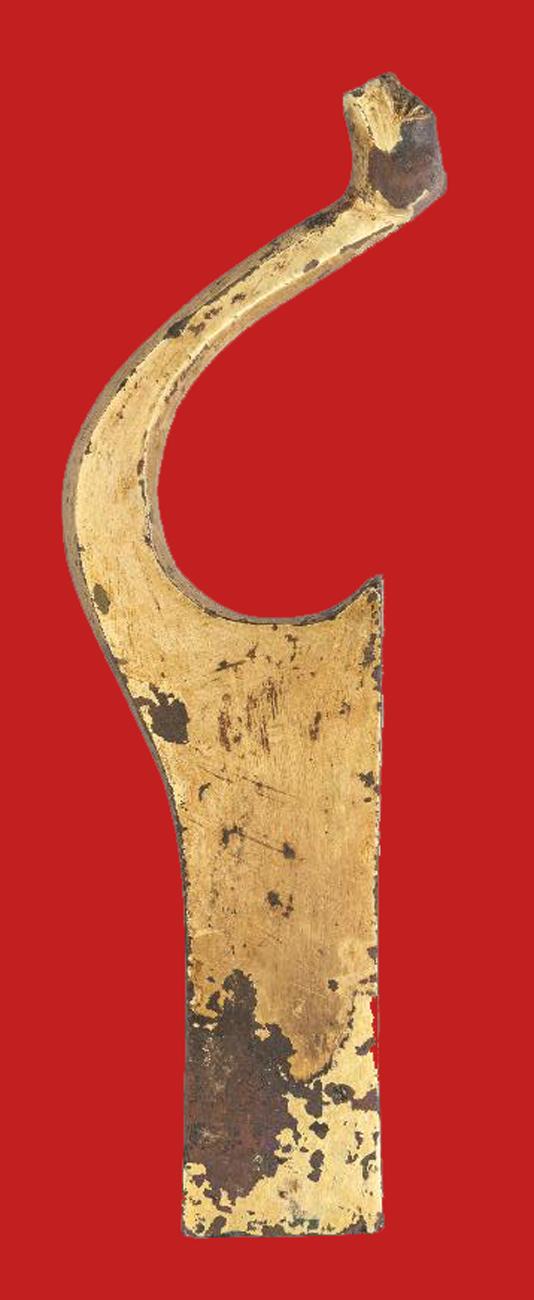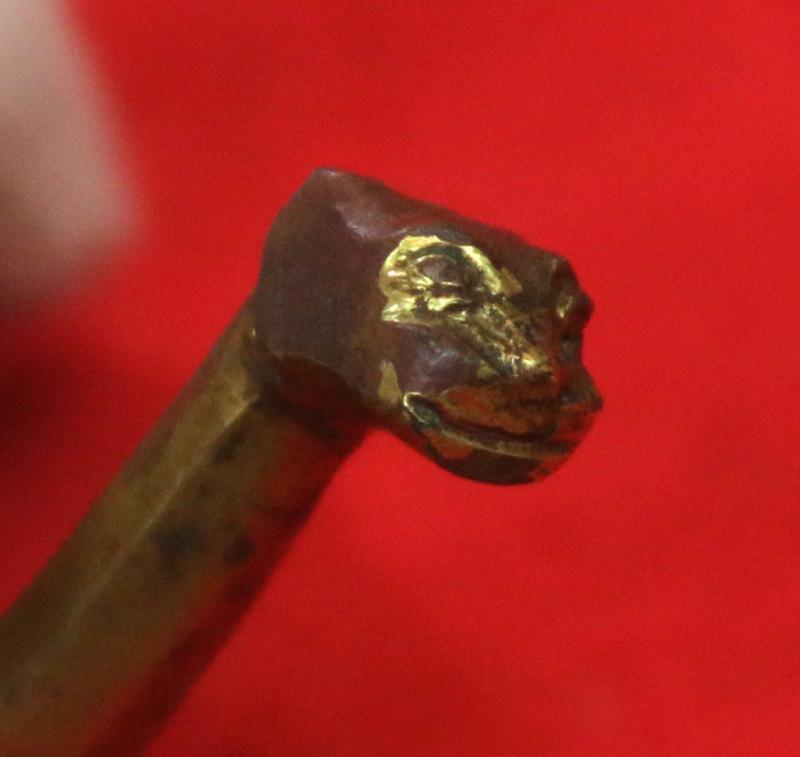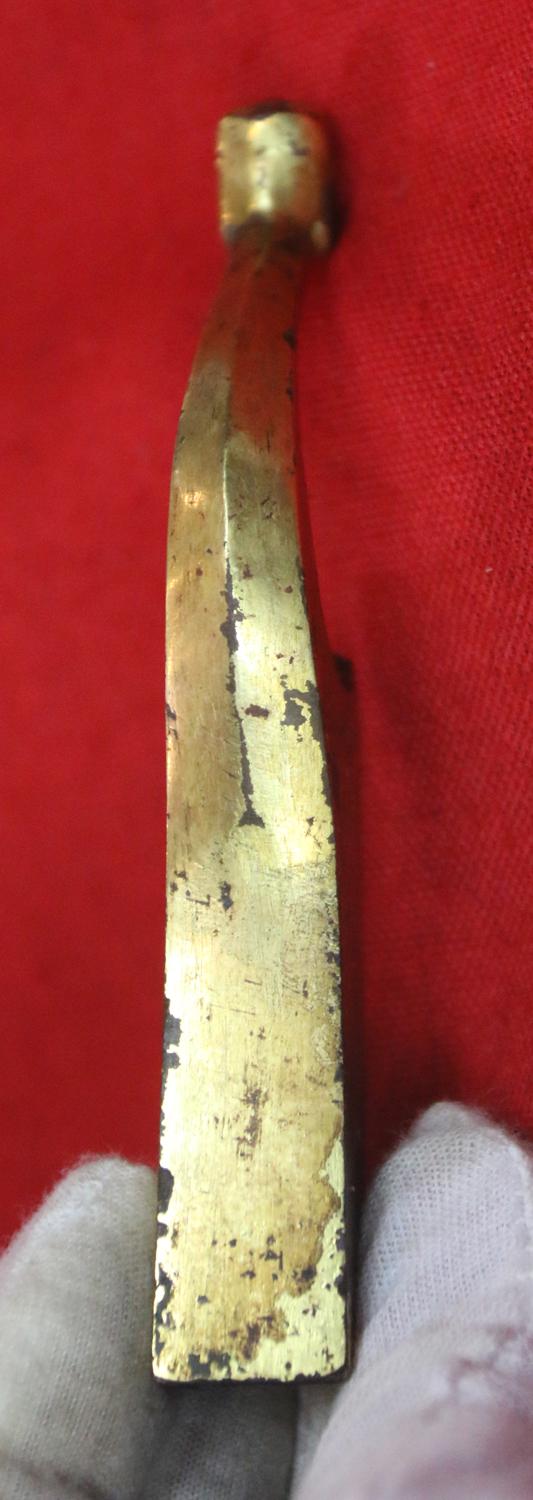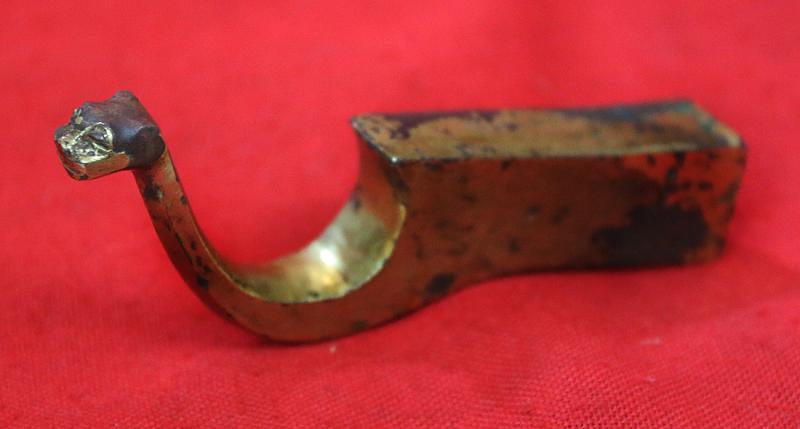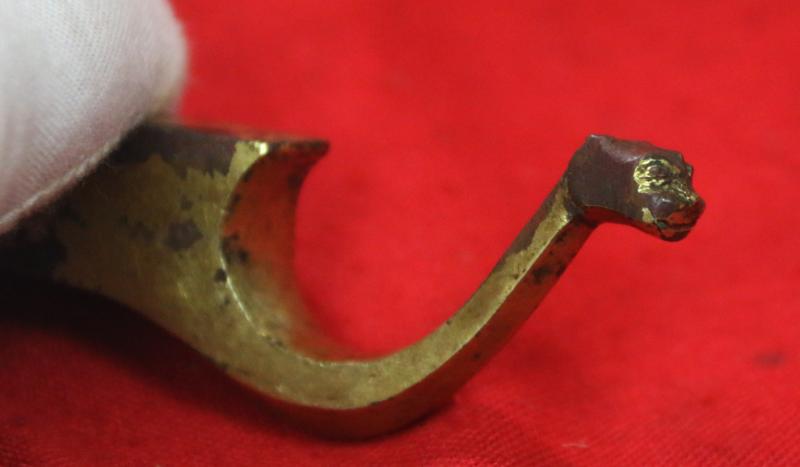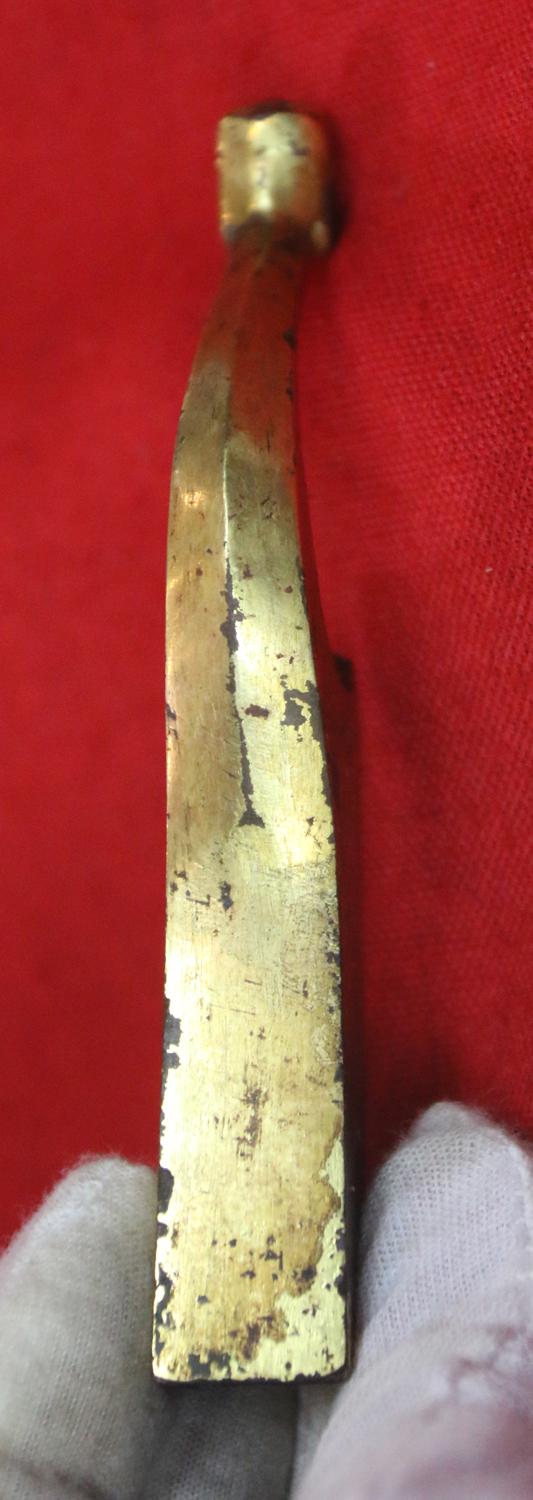A Superb Ancient Chinese Warring States Period 480-222bc Gold & Bronze Chariot Crossbow Mount in Gold with Tiger Head Finial
Being bronze overlaid with gold, with a stunning tiger head finial, this is not the crossbow fitting of a mere officer, but likely of a young Chinese prince, or certainly a very high ranking noble in the chariot ranks of an army.
The history of the chariot and the development of the crossbow in ancient China are interrelated. The chariot is considered the world’s first war machine. As early as the Warring States period, the Chinese attempted to mount the crossbow on the chariot like a machine gun on a modern scout car. Excavation of ancient Chinese chariots has confirmed the descriptions of them in the earliest historical texts.
For the ancient Chinese philosopher, the chariot was the supreme symbol of success. It’s light weight and speed remained the wonder of ancient China. The effective commander was compared to the crossbow. Sun Tsu, in The Art of War, argued that the momentum of one really skilled in war is irresistible, because his overwhelming attack is precisely determined. His ability to strike exactly when required resembles a drawn crossbow, for he is quick as the release of the trigger.
The most significant advantage of the crossbow over the composite bow was the longer range. To be a cross bowman was an important military position in the Han period. However, it was not unusual for captive crossbowmen to be executed upon capture by the opposing army, such was the dread of the weapon and its power.
This exceptional example contains the decorative elements of a status symbol as well as the strength to be used as a deadly tool of war. The sensuous curves of the gilded handle taper into stylized dragon finials that were used to hold the taut bowstring in place. In our opinion, the style, craftsmanship and subject matter of this of gilded bronze crossbow handle indicate a Warring States dynastic date.
Fittings of this type have been excavated in pairs in association with chariots, and their function has long been a research topic of scholars. A pair of silver-inlaid bronze crossbow fittings were discovered from a Warring States tomb in Luoyang, Henan province, published in Luoyang Museum, 'The Chariot Pit Found at Chung-chou-lu', Kaogu , no . 3, 1974, p. 174, fig. 1. According to the archeological report, this pair of fittings were unearthed in front of the wooden shaft of a crossbow, near the left side of a chariot. Based on this finding, the report theorized that they were fitted to the front of a crossbow shaft to support the bow, and the upcurved terminals were meant to be the aiming mechanism. See a reconstruction drawing illustrated in Luoyang Museum, ibid., p. 177, fig. 7.
Other scholars have developed a different theory and propose that these fittings in fact functioned as crossbow supports on a chariot. Both fittings were attached horizontally to the front left panel of a chariot, adjacent to the occupants. The crossbow was placed facing down, with its bow resting on the curved shafts and its handle positioned obliquely upward, ready at hand for a quick draw.
The present fitting is notable for its bird-head terminal, which appears to be rare among extant examples. Related examples include: a silver-inlaid crossbow fitting, also with a bird-head terminal, in the Avery Brundage Collection, published in René-Yvon Lefebvre d'Argencé, Ancient Chinese Bronzes in the Avery Brundage Collection , Berkeley, 1966, pl. XLIX, fig. B. Compare also a pair of gold and silver-inlaid crossbow fittings, with a serpent-head terminal, included in the exhibition Chinese Art of the Warring States Period. Change and Continuity, 480-222 BC , Freer Gallery of Art, Washington, DC, 1982, cat. no. 26; another pair published in Chinese Gold und Silver. Die Sammling Pierre Uldry, Rietberg Museum, Zürich, 1994, cat. no. 28a; a single fitting from the Ernest Erickson Foundation,
Code: 24837
895.00 GBP


